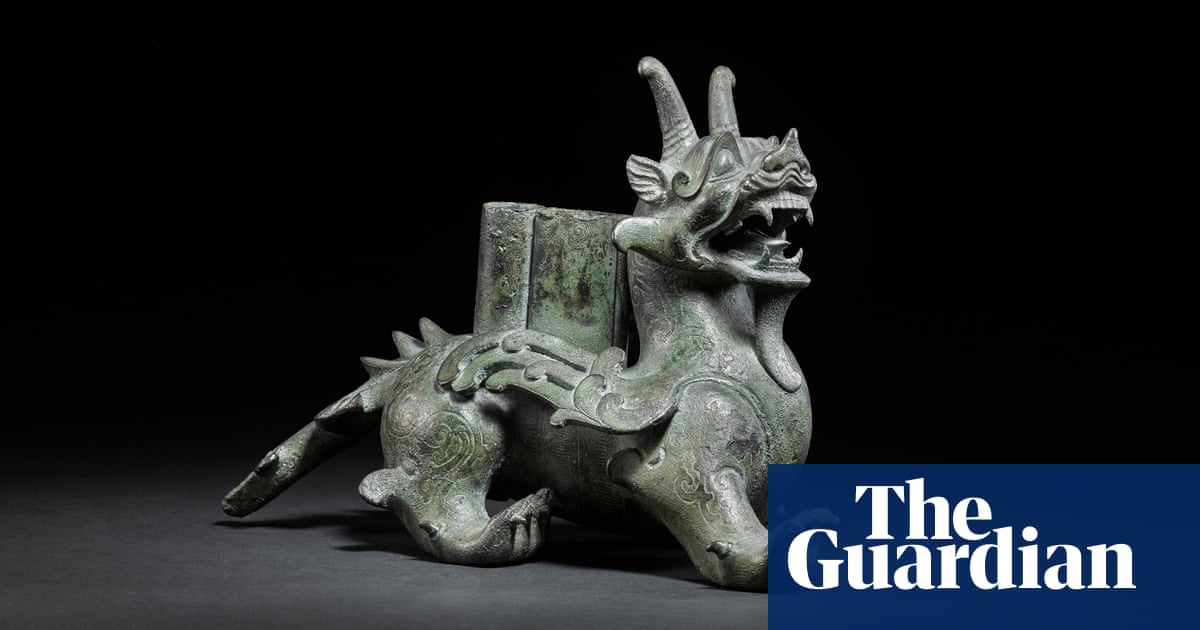British Museum receives major bequest of Chinese porcelain and jades
An outstanding collection of Chinese porcelain and jades has been left to the British Museum in “one of the most significant bequests” of its history.
The artworks come from the collections of Sir Joseph Hotung, a businessman, philanthropist and art collector, who died last year.
Hotung’s name has adorned the museum’s major gallery of Chinese and south Asian antiquities since he donated millions of pounds for its renovation after complaining that he needed to take a torch on visits because the lighting was so poor. It was reopened by the Queen in 1992, and again in 2017 after further renovations.
The bequest includes 246 jades, 15 very fine Yuan (1279-1368) and Ming dynasty (1368-1644) blue-and-white porcelains, and a dry lacquer head of a Bodhisattva. The items will go on display in the coming months.
George Osborne, the chair of the museum’s trustees, said: “This is one of the most generous gifts we’ve ever received, and it means future generations will be able to enjoy these beautiful objects and learn more about the extraordinary history of China.”
An 11th/12th-century gilt-bronze seated figure of Avalokiteśvara. Photograph: Sotheby’s
Hotung’s family said: “Our father thoroughly enjoyed collecting and studying exquisite art and it was his belief that art should be accessible to everyone. We are pleased that our father’s collections will now be viewed by the millions of visitors who pass through the British Museum every year.”
A further 400 works from Hotung’s personal collection will be sold at auctions in the autumn. They include a “beautifully and sensitively modelled” seated figure of Avalokiteśvara from the Dali kingdom in south-west China. It will be sold by Sotheby’s in Hong Kong, with an estimated price of £1.5m-£2m.
Another highlight is an intricately carved cinnabar lacquer box from the period of Yongle in the 15th century that is “among the most desirable examples” of Ming lacquerware, according to Sotheby’s.
A folding horseshoe-back armchair, made from huanghuali, a type of rosewood, is a rare example of what became by the Ming dynasty a seat of honour for travelling dignitaries. It is estimated to sell for up to £1.5m.
Hotung “adorned his London house with beautiful things, pieces that he bought to live with”, said Henry Howard-Sneyd, Sotheby’s chair of Asian art. “As well as Chinese furniture and works of art, he collected Chippendale furniture and quite eclectic western paintings. It all worked together in an extraordinarily harmonious way.”
Hotung’s interest in art began when he wandered into an oriental gallery in San Francisco while waiting for a delayed flight. On a whim, he bought two decorative Chinese bowls.
His new passion provided “a totally new interest in life, and a new dimension”, he said. “It helps me see things from different angles.”
He later became a trustee of the Metropolitan Museum of Art and chair of the Hong Kong Arts Development Council.
Hotung felt that collectors had a “responsibility to be stewards of these priceless works and to tend to them with great care”, his family said. “We are pleased that our father’s treasures will now find new homes where they may continue to be cherished and enjoyed by others.”











